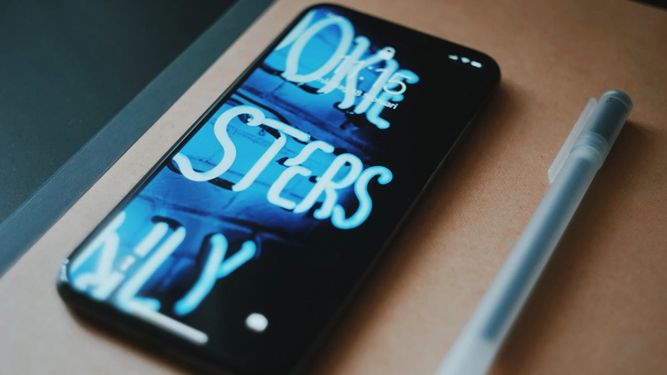Service Development
Three Examples of B2B Website Experiences That Convert
09/01/22
We’ve seen it many times before: search traffic to your B2B website is good, people are reaching the pages you want to direct them to, yet not enough of them are being converted. Content is king as they say, so there must be something wrong with exactly that, right? Not necessarily. Even the most engaging content in the world will underperform if it isn’t presented with the same high quality standard of UI. Which is why in this blog we’re going to highlight three inspiring best practice examples of B2B websites with a UI that helps convert, and how your business can learn from them.
1. Evernote
Evernote is an application that allows you to store notes, documents, images, and web articles then access them across all your devices.

On their website, Evernote clearly addresses the user pain points they are targeting and offers solutions — but where they really stand out is the clean minimalistic design, and appropriate platform screenshots. The reader can clearly see what they could be using if they get the application: is it user-friendly? Does it have the features I need? Keeping in mind that many users don’t like to read long detailed descriptions, having imagery that sells the product like this often does a great job.
The clean and minimalistic design also makes it easy for users to scroll through the different sections and pages. The text is short, easy to understand, and to-the-point. The mixture of content and images combined with whitespace avoids clutter or overloading the user with information.
Users of Evernote immediately recognize its distinctive shade of green, so it’s no surprise that the same green is used effectively as an accent color throughout the site and app. Using minimalistic icons and design elements with branded coloring creates a solid brand awareness too.
Finally, the transparency of their prices and plans ensures there aren’t any hidden surprises.
2. Asana
Asana is a work management platform designed to help teams stay organized, connected and on track with projects, tasks, and workload.

Asana uses a clean minimalistic and modern design with subtle brand color highlights on their website. The “Get Started” CTA in black in strong contrast to the white background leads to an effortless sign-up process in very few steps. Note also that there’s a lot of white space and each section is not overloaded with content. Graphical elements are used to balance the content and the subtle animation draws attention to the imagery.
3. Zendesk
Zendesk is a digital customer service platform that streamlines sales and upgrades customer engagement and support.

The Zendesk website uses a clean minimalistic and modern design with a friendly tone of voice. Phrases like “champions of customer service” or “champions of awesome free trials” create an easy-going and inviting feel. Zendesk highlights their brand identity by adding a sense of humanizing touch in every design aspect. Providing the user with a free trial gives the user a possibility to try out the product before purchasing, lowering the threshold for signing up. They have also embedded a tour of the product to provide an interactive experience of how it works.
4. The importance of website accessibility for B2B
The final point isn’t a specific example of a website, but rather, the answer to a frequently asked question in the area that’s important not to ignore. A common opinion is that web accessibility isn’t applicable to B2B websites, and only relevant to the public sector – an opinion that is wrong! If your website doesn’t accommodate users with an impairment, how do you expect to turn any of those users into a customer?
Want to know more about accessibility but don’t know where to start? We’ve created a list of areas to start focusing on in order to make websites more accessible.
Use clear Headings
Headings are the most obvious way to separate your web content into logical sections. Clear headings that follow a structured hierarchy will help those using assistive technologies to navigate your content. Simply bolding or making text larger won’t do this – you’ll need to structure your pages in the proper way.
Make lists
Like headings, lists aid readability and enables you to split up content so that it is easier to understand.
Include descriptive Alt Text to images
Alternative text (alt text) helps to contextualize images in cases where users cannot view them. Many content management systems will allow you to add alt text in at the upload stage – so be sure not to miss it.
Write clear copy
companies are so accustomed to using industry jargon on a daily basis, and they can become blind to the fact that their users may not necessarily be using the same language. Users can easily be put off by unnecessarily complex language and long sentences.
Label your form fields
Your contact form field labels should be as clear as possible. A high percentage of websites have inadequate form field descriptions, help text and/or error messages.
Enhance keyboard navigation
Many users prefer to use the keyboard instead of a mouse so make sure you can navigate through your site and content using the keyboard only.
Key Takeaways:
- Keep design simple where possible. Your visitors are humans, not robots, and their time is a precious commodity – don’t waste it bombarding them with clutter.
- Your CTA shouldn’t be an afterthought. Spend time on making them stand out.
- A clear offer of a free trial is a great way to lower the threshold and encourage conversion while you have a visitor’s precious attention.
- Accessibility should never be an afterthought, even for B2Bs. How do you expect to turn users with an impairment into customers if they aren’t accommodated for?
The above examples of high-quality UI and accessibility improvements only scratch the surface of what can be done to enhance the content of B2B websites and increase their chances of converting visitors into customers. Nordic Morning’s expert team excels at helping some of the biggest brands take their websites to the next level and improve their conversion. Ready to turn your prospects into new business? Contact us here to find out how.



